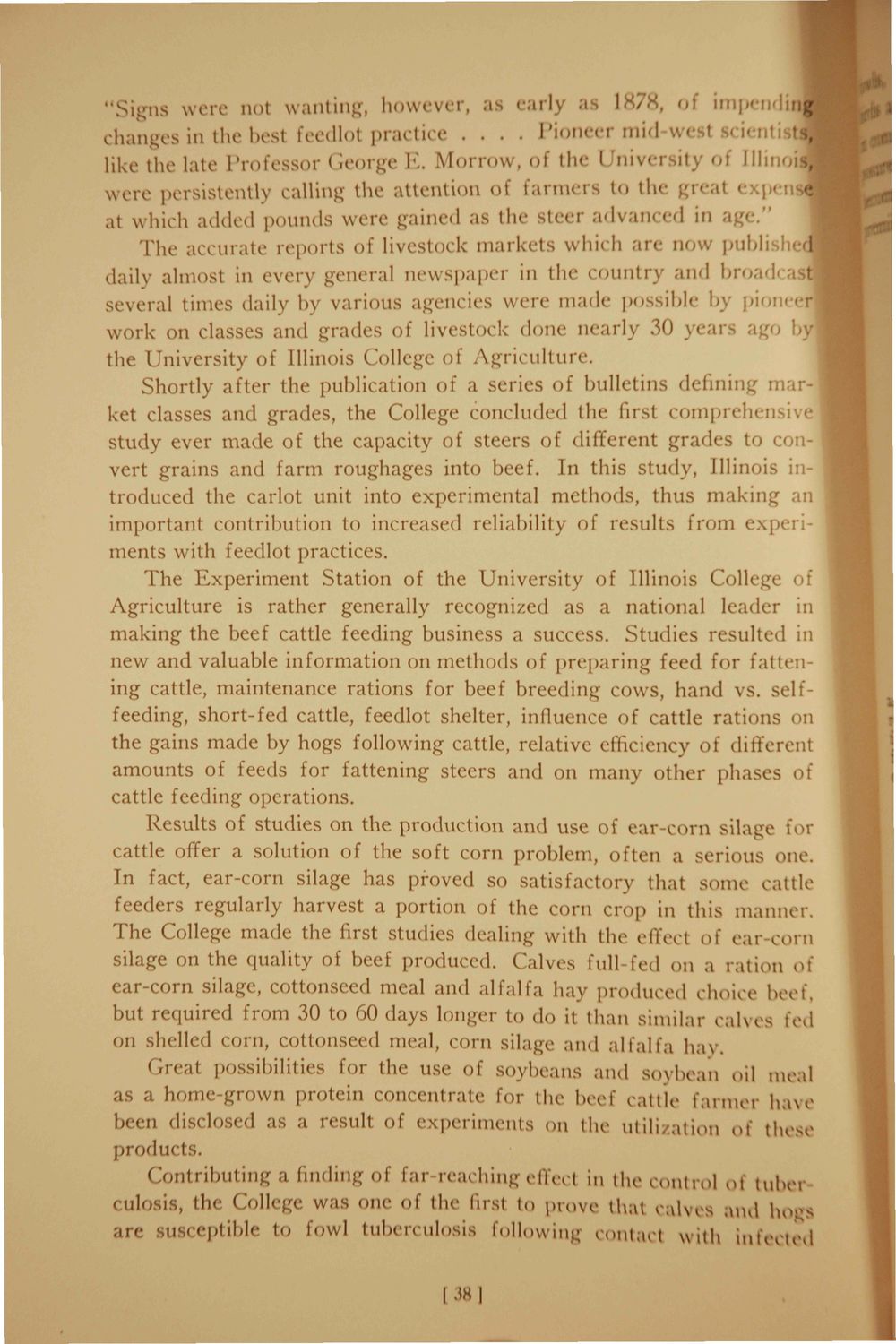Caption: Booklet - One Hundred Million (Impact of UI) (1931)
This is a reduced-resolution page image for fast online browsing.

EXTRACTED TEXT FROM PAGE:
"Signs were not wanting, however, aa early as 1878, of impei linj changes in the best feedlot practic( . . . . Pion< i mid W( \\ sc'v like the late Professor (George E. Morrow . of the Univei ity i Nlinoi were persistently calling the attention of farmers to th< it • -.p tl which added pounds were gained as the St< i r advanced in • The accurate reports of livestock markets which arc now publisl daily almost in every general newspaper in the country and br< several times daily by various agencies were made possible b pion< r work on classes and grades of livestock done nearly 30 \ tgo the University of Illinois College of Agriculture. Shortly after the publication of a series of bulletins defining I ket classes and grades, the College concluded the first compi ensiv< study ever made of the capacity of steers of different grades to convert grains and farm roughages into beef. In this study, Illinois introduced the carlot unit into experimental methods, thus making an important contribution to increased reliability of results from riments with feedlot practices. The Experiment Station of the University of Illinois College of Agriculture is rather generally recognized as a national leader in making the beef cattle feeding business a success. Studies resulted in new and valuable information on methods of preparing feed for fattening cattle, maintenance rations for beef breeding cows, hand vs. selffeeding, short-fed cattle, feedlot shelter, influence of cattle rations on the gains made by hogs following cattle, relative efficiency of different amounts of feeds for fattening steers and on many other phases oi cattle feeding operations. Results of studies on the production and use of ear-corn silage \mcattle offer a solution of the soft corn problem, often a serious one. In fact, ear-corn silage has proved so satisfactory that some cattle feeders regularly harvest a portion of the corn crop in this manner. The College made the first studies dealing with the effect of ear corn silage on the quality of beef produced. Calves full-fed on a ration oi ear-corn silage, cottonseed meal and alfalfa hay produced choice beet. but required from 30 to 60 days longer to do it than similar cal\es led on shelled corn, cottonseed meal, corn silage and alfalfa hav. Great possibilities for the use of soybeans and soybean oil meal as a home-grown protein concentrate for the beef cattle fanner have been disclosed as a result of experiments on the Utilization Of these products. Contributing a finding of far-reaching effect in the control Oi tuber culosis, the College was one of the first to prove that calv< ! and h< are susceptible to fowl tuberculosis following contact with infect 1 I .m|
|